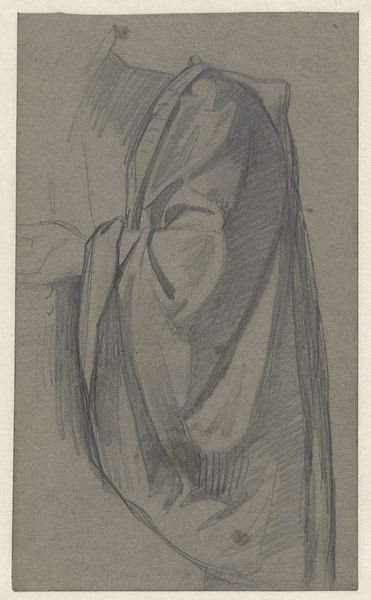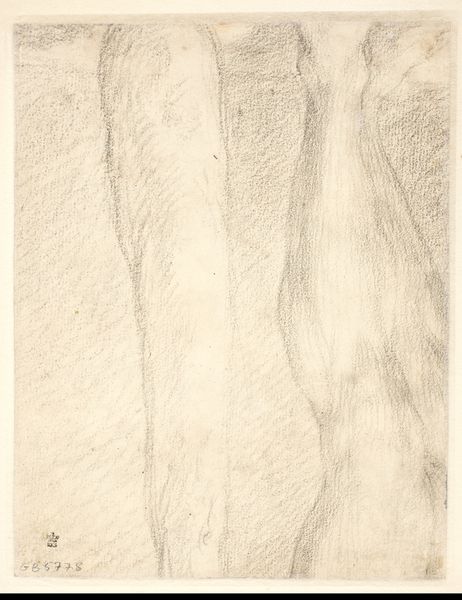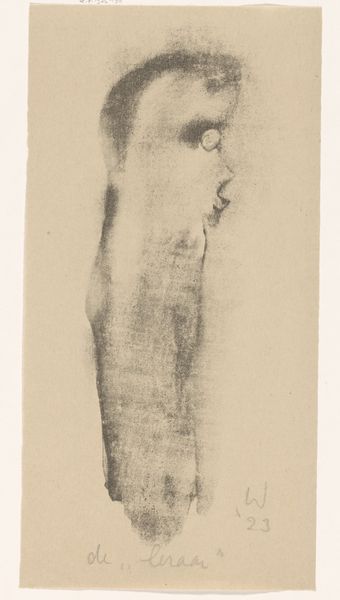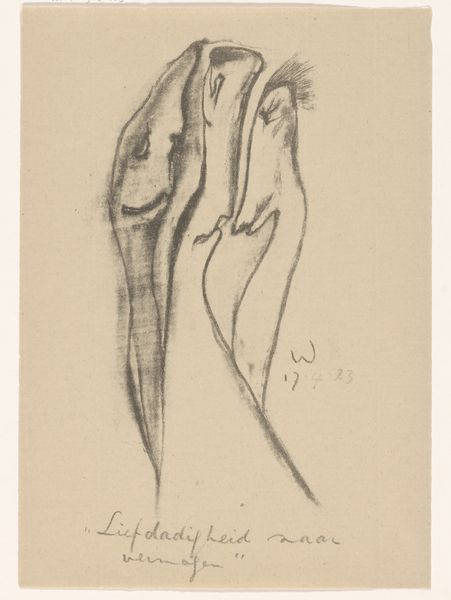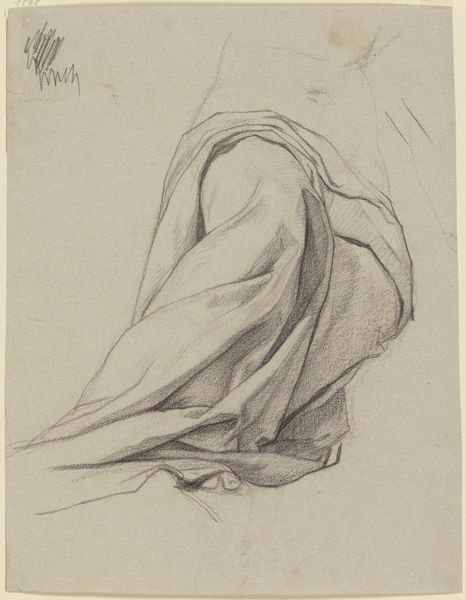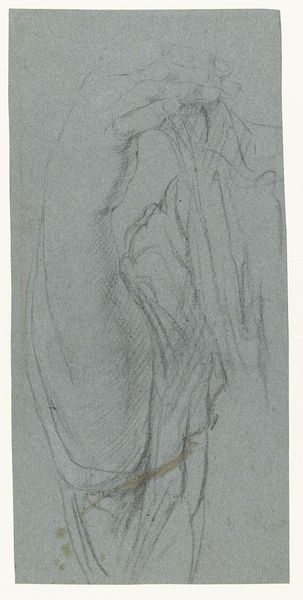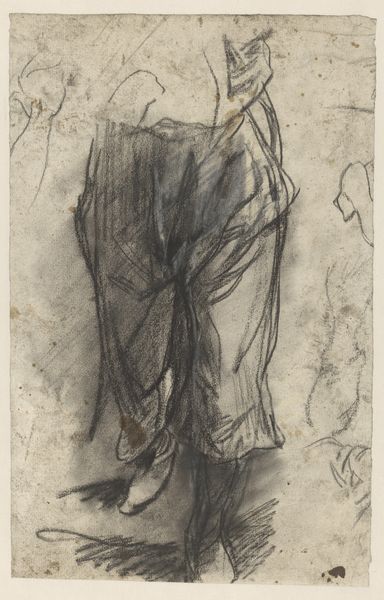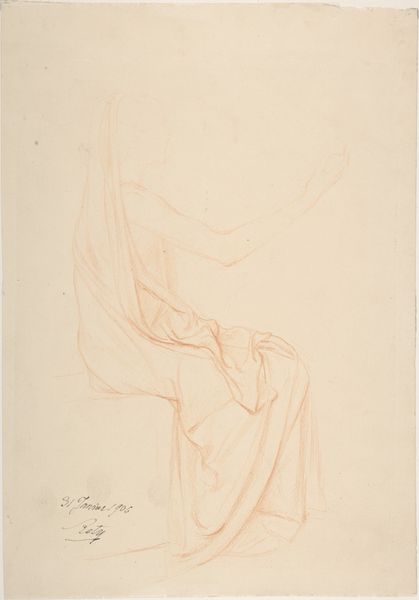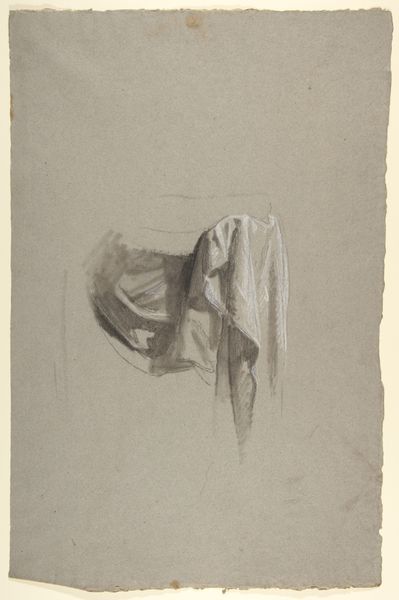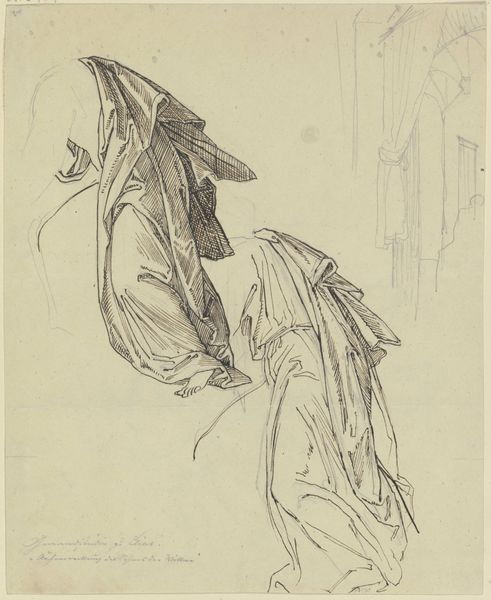
drawing, charcoal
#
drawing
#
charcoal drawing
#
form
#
charcoal
#
academic-art
Dimensions: image: 65.7 x 23.1 cm (25 7/8 x 9 1/8 in.)
Copyright: National Gallery of Art: CC0 1.0
Curator: Good morning. Today we're observing "Drapery Study," a charcoal drawing created by Karel Vitezslav Masek in 1888. Editor: Immediately, I see a somber mood, but also an elegance in the monochromatic rendering of the draped cloth. It reminds me a little of old photos capturing Victorian fashions. What is your sense? Curator: There is a powerful timeless quality. Drapery is profoundly symbolic—covering, revealing, concealing. Think of mourning veils, royal robes... what's shrouded often becomes sacred, hinting at mystery or transformation. Editor: That makes sense. Looking at the academic art style, it's all about light and shadow play, giving a sculptural feel to something as soft as fabric. It's also quite an ordinary subject, treated with reverence. Is there perhaps a deeper message within such studies? Curator: Certainly. Drapery studies were fundamental academic exercises. The ability to render fabric convincingly was seen as evidence of mastering form. This translates visually as emotional control, even the art of disguise – mastering the surface to control perception. Editor: So, in this unassuming drawing of fabric, we find this commentary on what's visible versus concealed. And if we follow the classical art idea that drapery humanizes ancient figures, then maybe it lends a more relatable human dimension? Curator: Exactly! What starts as an exercise in form elevates into exploring core values – the constant tension between unveiling and hiding. Even now, the weight and flow have cultural implications; they dictate ritual, fashion, and architecture. Editor: It’s fascinating to consider that. For something so commonplace, draped fabric takes on enormous metaphorical importance. It makes one look a little differently at those curtains at home. Thanks for the insights! Curator: My pleasure. Reflecting on this work reaffirms the continuity and universality of how humans see meaning through visual symbolisms.
Comments
No comments
Be the first to comment and join the conversation on the ultimate creative platform.
